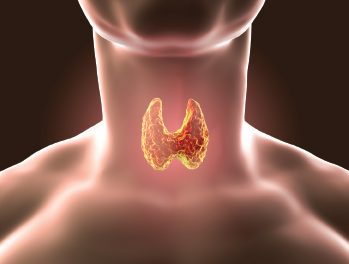 TRIO Best Practice articles are brief, structured reviews designed to provide the busy clinician with a handy outline and reference for day-to-day clinical decision making. The ENTtoday summaries below include the Background and Best Practice sections of the original article. To view the complete Laryngoscope articles free of charge, visit Laryngoscope.
TRIO Best Practice articles are brief, structured reviews designed to provide the busy clinician with a handy outline and reference for day-to-day clinical decision making. The ENTtoday summaries below include the Background and Best Practice sections of the original article. To view the complete Laryngoscope articles free of charge, visit Laryngoscope.
Background
Over the years, many alternative surgical approaches, so-called “remote-access” techniques, have been described for thyroid surgery, driven by cosmetic concerns. Such techniques have used both endoscopic and robotic approaches from different body sites, including the axilla, breast, and retro-auricular regions. These are considered by many to be overly cumbersome, costly, and unnecessary, however, particularly given the generally good cosmetic results and complication rates achieved with open thyroidectomy (OT). Certain complications, such as the possibility of brachial plexus injury in the transaxillary approach, have made surgeons wary of such remote-access techniques.

© Kateryna Kon / shutterstock.com
In the past several years, a novel transoral approach has been developed. Initial studies attempted to utilize a sublingual incision in the floor of the mouth for endoscopic access to the thyroid. This specific approach never gained much traction; however, a relatively new approach, solely using the oral vestibule (transoral endoscopic thyroidectomy by vestibular approach), has become increasingly popular around the world, including in Western countries where remote-access thyroid surgery has largely been shunned in the past.
Best Practice
Transoral thyroidectomy can be safely performed in a select group of patients. The transoral vestibular approach has unique advantages over previously described remote-access approaches for thyroidectomy. This approach compares favorably to traditional open approaches in very carefully selected patients. Transoral thyroidectomy is reasonable to offer patients who meet specific criteria (see Table 1). Caution is advised in certain patients until further studies are available, as the current evidence is low quality. Regardless, this emerging technique warrants further study. All patients should be informed of the complications specific to transoral thyroidectomy, including the possibility of conversion to OT.
Suggested Surgical Candidacy Criteria
| Indications | Contraindications | Further study needed |
|---|---|---|
| Medically fit Patient wants to avoid cervical scar Favorable anatomy Benign nodule or low suspicion of malignancy: <6 cm nodule diamete Micropapillary carcinoma or high suspicion of malignancy: <1 cm Total thyroid diameter <10 cm | Previous neck/chin surgery or radiation Overt or suspicion of extrathyroidal extension Lymph node metastasis Oral abscess Substernal goiter | Obese patients Grave’s disease, thyroiditis, hyperthyroidism Central neck dissection Completion thyroidectomy Differentiated thyroid cancer 1–2 cm |